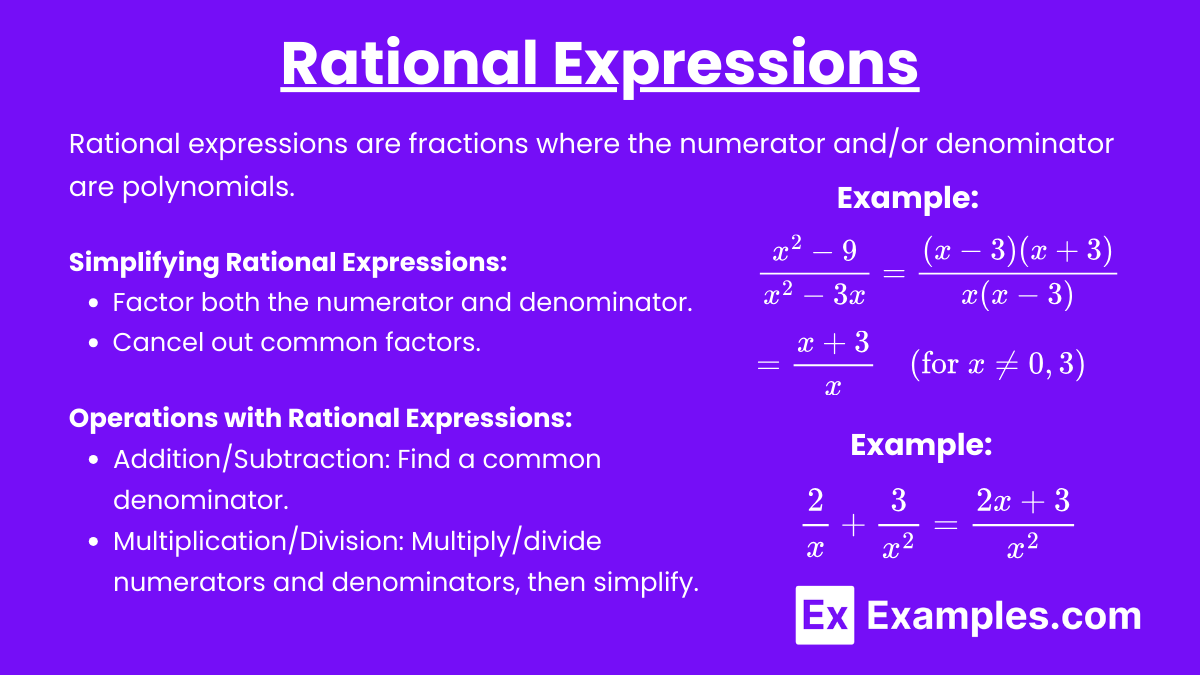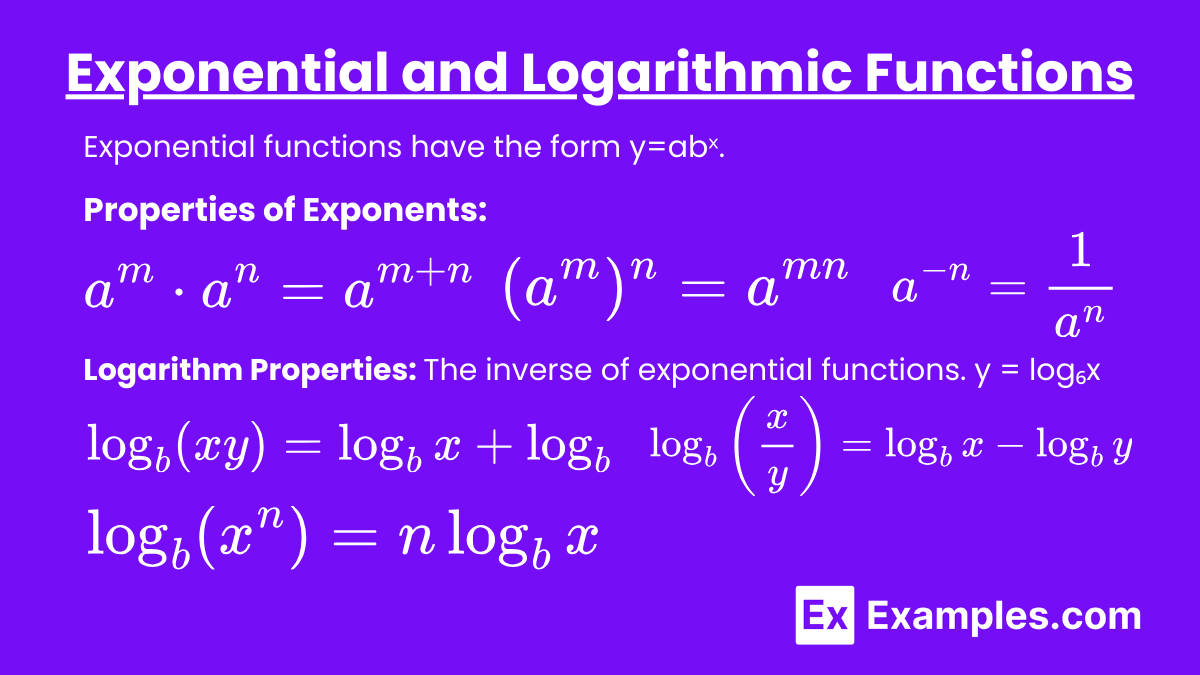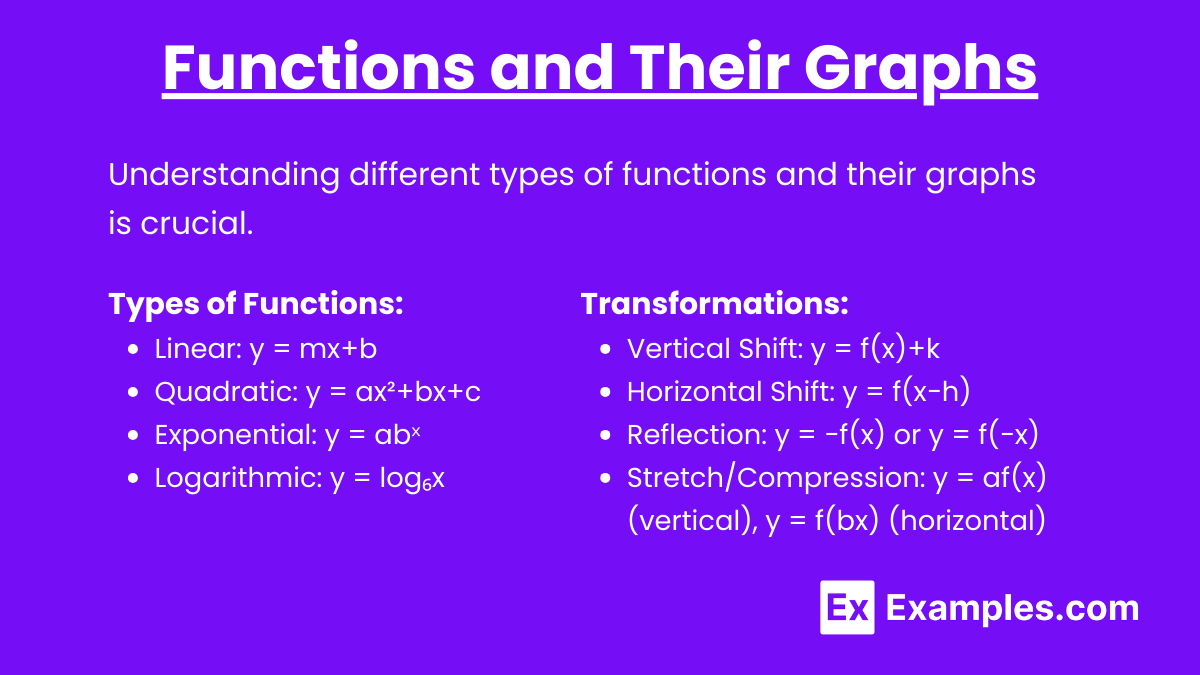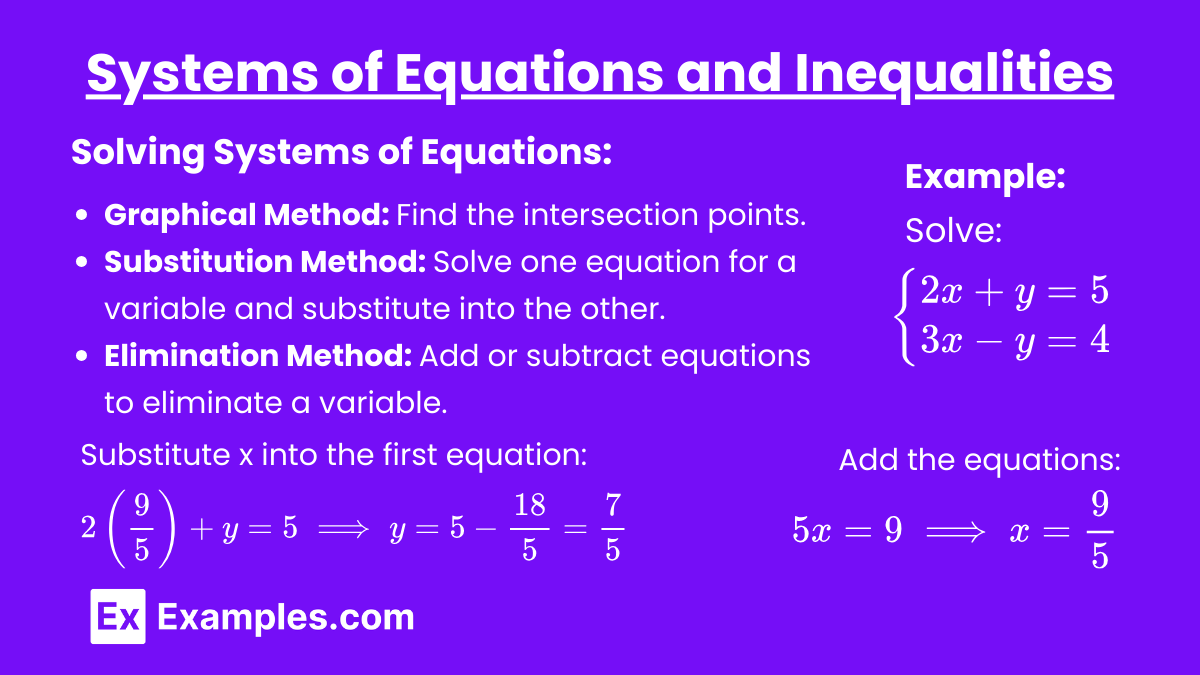
Intermediate Algebra builds on the concepts of Elementary Algebra and is essential for achieving a high score on the ACT exam. This guide covers key topics, definitions, and examples to enhance your understanding and performance.
In Intermediate Algebra for the ACT Math exam, you should focus on understanding and solving quadratic equations, including using the quadratic formula and completing the square. Master the properties and operations of exponents and radicals. Learn about functions, including evaluating, interpreting, and graphing them. Study complex numbers and their operations. Gain proficiency in solving systems of equations, both linear and non-linear. Additionally, explore sequences, series, and logarithms to enhance problem-solving skills and algebraic understanding.

Rational expressions are fractions where the numerator and/or denominator are polynomials.
Simplifying Rational Expressions:
Example:
Operations with Rational Expressions:
Example:

Radicals involve roots, such as square roots or cube roots.
Simplifying Radicals:
Example:
\[ \sqrt = \sqrt = 5\sqrt \]
Solving Radical Equations:
Example:
\[ \sqrt + 3 = 5 \]
Square both sides: x+3 = 25
Solve for x: x = 22

Quadratic functions have the form ax²+bx+c. The graph is a parabola.
Factoring Quadratics:
Find two numbers that multiply to ac and add to b.
Example:
Quadratic Formula:
Use when factoring is difficult.
Example:

Exponential functions have the form y = abˣ.
Properties of Exponents:
Logarithms:
The inverse of exponential functions. y = log₆x means bᵧ = x.
Example:
log₂8 = 3(since 2³ = 8)
Logarithm Properties:

Understanding different types of functions and their graphs is crucial.
Types of Functions:
Transformations:
 Systems of Equations and Inequalities" width="1200" height="675" />
Systems of Equations and Inequalities" width="1200" height="675" />
Solving Systems of Equations:
Example:
Solve:
Add the equations:
Substitute x into the first equation:
\[
2 \left( \frac \right) + y = 5 \implies y = 5 – \frac = \frac
\]
Question 1:
Solve for x in the quadratic equation: x²−5x+6 = 0.
A. x = 2 and x = 3
B. x = −2 and x = −3
C. x = 1 and x = 6
D. x = −1 and x = −6
Answer: A. x = 2 and x = 3
Explanation:
To solve the quadratic equation x²−5x+6 = 0, we can factorize it:
So, the correct answer is A. x = 2 and x = 3.
Question 2:
Solve the system of equations:
2x+3y = 7
x−y = 1
A. x = 1, y = 2
B. x = 2, y = 1
C. x = 3, y = 1
D. x = 1, y = 3
Answer: B. x = 2, y = 1
Explanation:
To solve the system of equations 2x+3y = 7 and x−y = 1:
So, the correct answer is B. x = 2, y = 1.
Question 3:
Simplify the expression: \[ \frac \]
Answer: C. x−1
Explanation:
So, the correct answer is C. x−1.
Free Interactive Teacher Resources